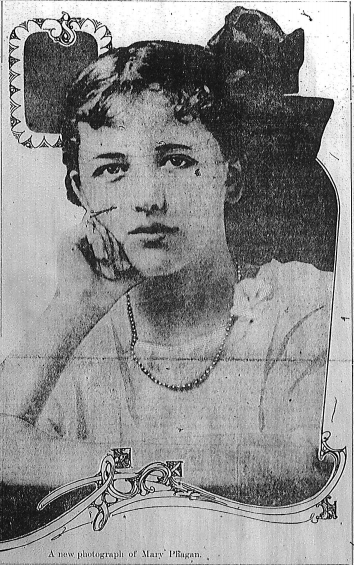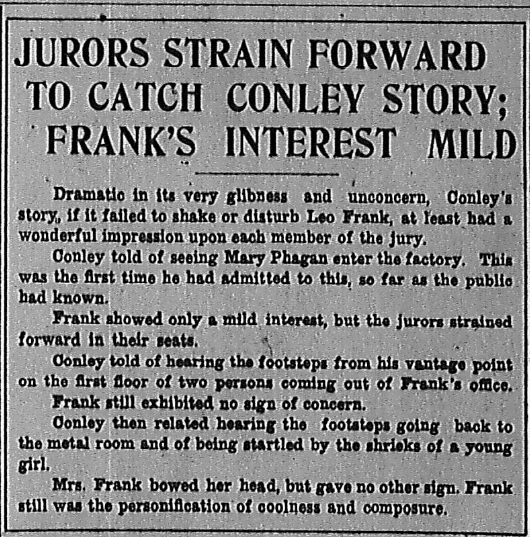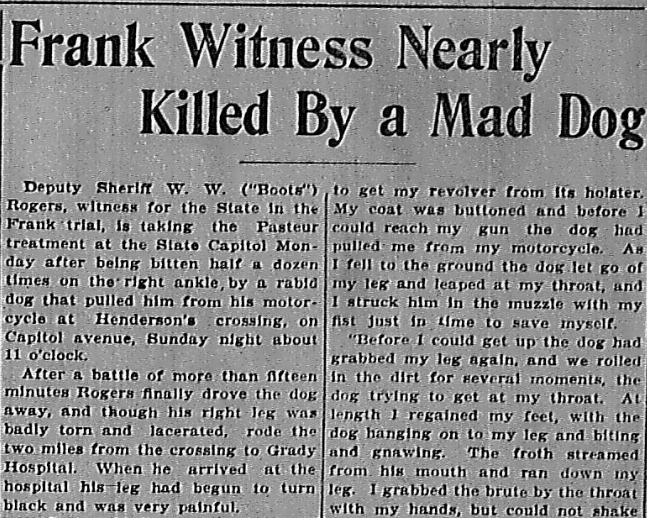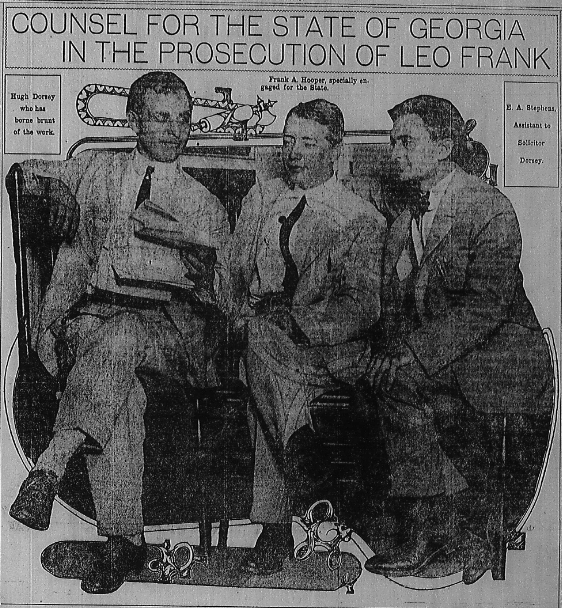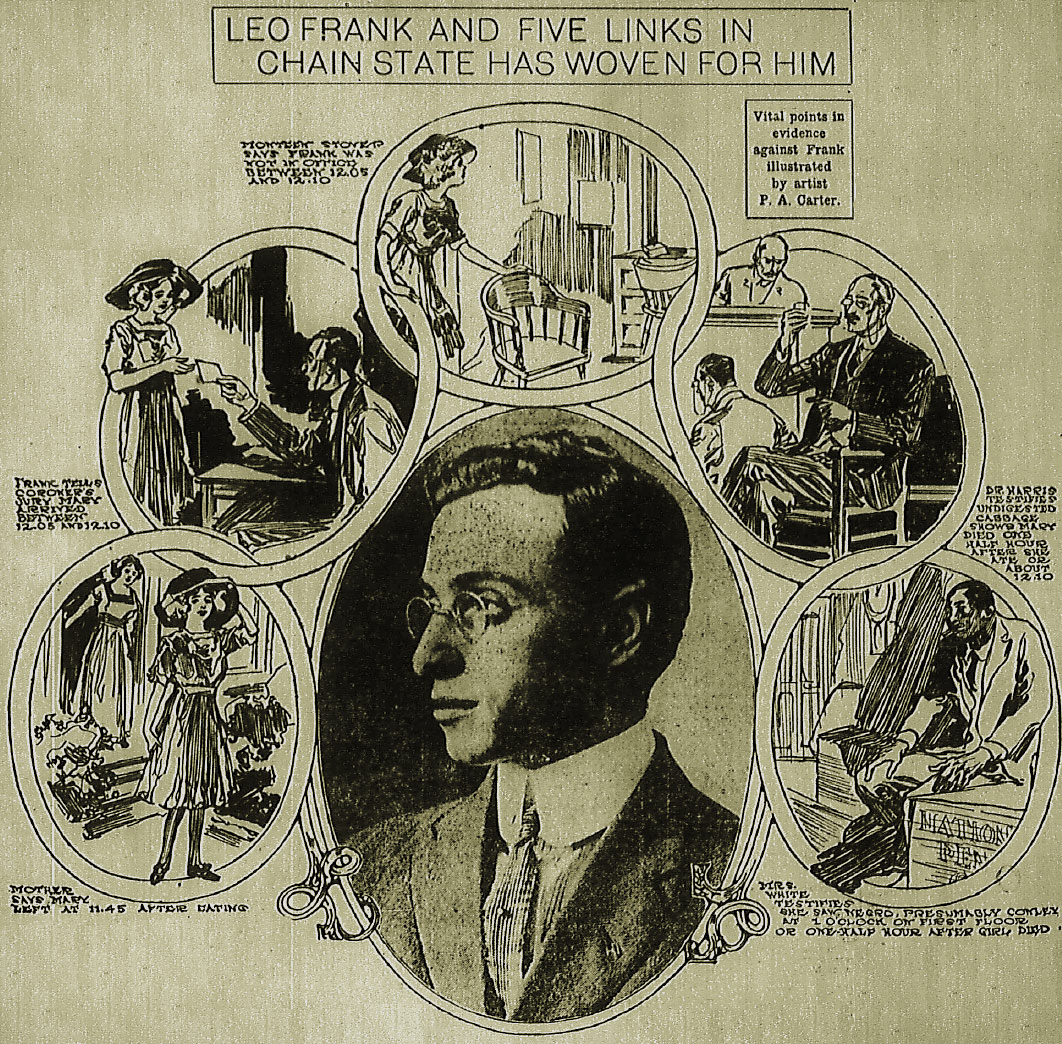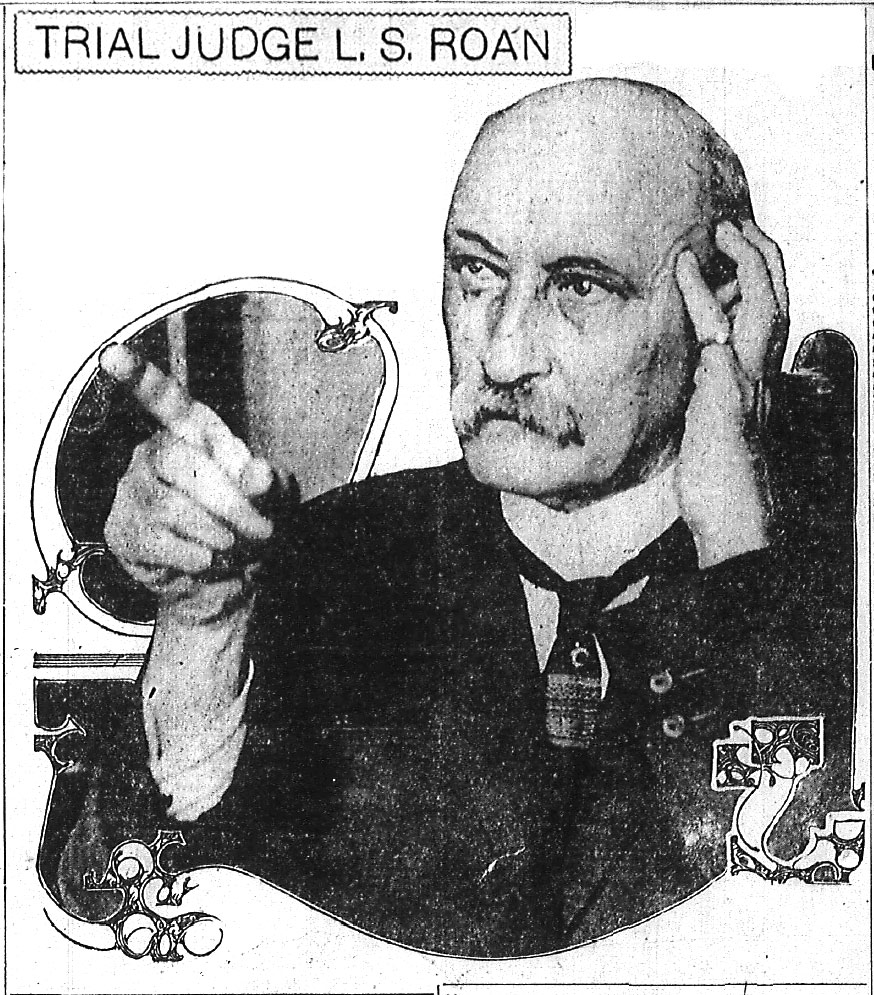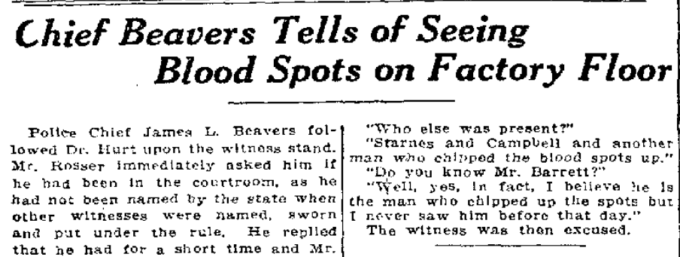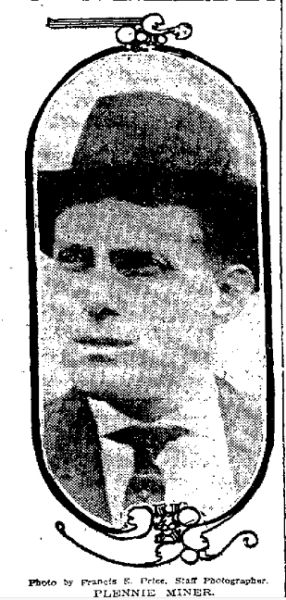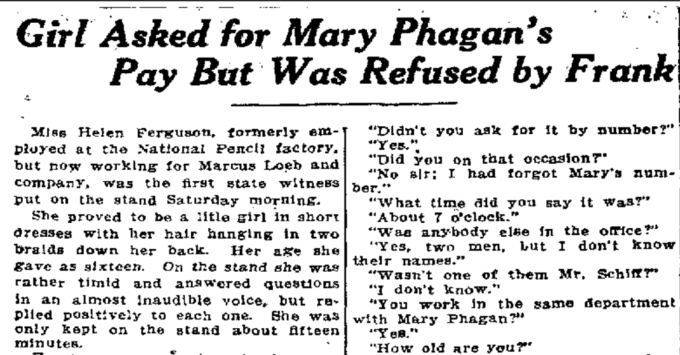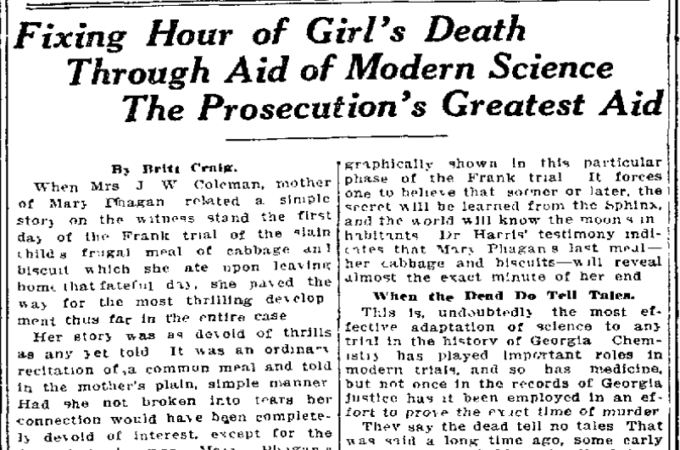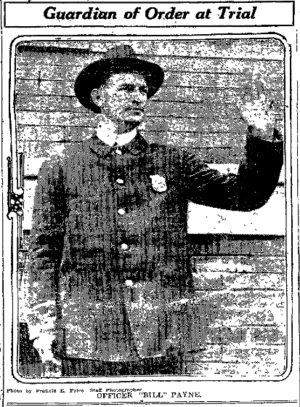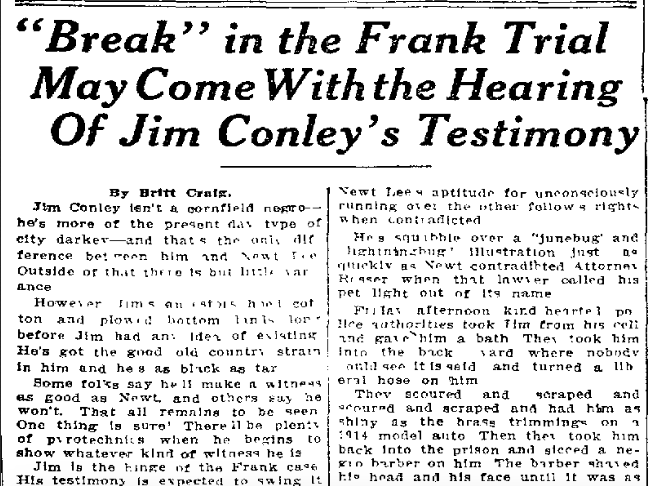
Another in our series of new transcriptions of contemporary articles on the Leo Frank case.
Atlanta Journal
August 4th, 1913
MANY NEW AND SENSATIONAL FEATURES ADDED TO TALE AS ORIGINALLY GIVEN TO POLICE
Conley Swears He Saw Mary Phagan Enter Factory, That He Heard Her Screams In the Metal Room a Short Time Later, That Frank Then Called Him and He Went Up and Found the Superintendent in a Panic and the Girl Dead
HE IDENTIFIES STAINED CROCUS BAGGING WHICH HE SAYS HE USED TO WRAP BODY AND TAKE TO BASEMENT
He Swears Frank Had Frequently Used Him as a “Lookout” When Women Visited the Factory and Gives Details About Several Alleged Occasions—Here Is His Story as Told to Jury, Women Ordered From Court Room by Judge
“CONLEY’S STORY THE VILEST AND MOST AMAZING PACK OF LIES EVER CONCEIVED” — LEO M. FRANK.
“The vilest and most amazing pack of lies ever conceived in the perverted brain of a wicked human being,” is the way Leo M. Frank characterized the remarkable story of James Conley, the negro sweeper.
It was to friends and while he was eating his luncheon in a courthouse ante-room that Frank expressed himself. He appeared to be almost overcome with indignation, but was confident that his attorneys would be able to break the negro down during cross-examination.
Every moment of the time that Conley was on the stand Monday morning his face was the object of Frank’s eye. The negro kept his gaze averted from Frank, but the defendant, apparently unmoved by the terrible accusations of the witness, continued to look him straight in the eye.
Jim Conley, negro sweeper at the National Pencil factory, took the witness stand at the trial of Leo M. Frank Monday morning, and told an amazing story which added many new and sensational features to the confessions given to the police by him and made public some weeks ago.
Conley for the first time dramatically declared that he was at the pencil factory when little Mary Phagan entered shortly after 12 o’clock to get her pay, that he saw her and that a little later he saw Monteen Stover go in. The Stover girl left the factory, he said, but Mary Phagan did not. A little while after Mary Phagan entered, according to the negro’s remarkable story, he heard screams in the metal room where the state claims the crime was committed. In a short time, Frank signalled him to come upstairs, and he went; finding the superintendent trembling all over and in a panic. The negro then detailed the story of finding the little girl’s dead body, of wrapping it up in a crocus sack at the direction of Mr. Frank, and assisting the superintendent in carrying it to the basement.
Continue Reading →

